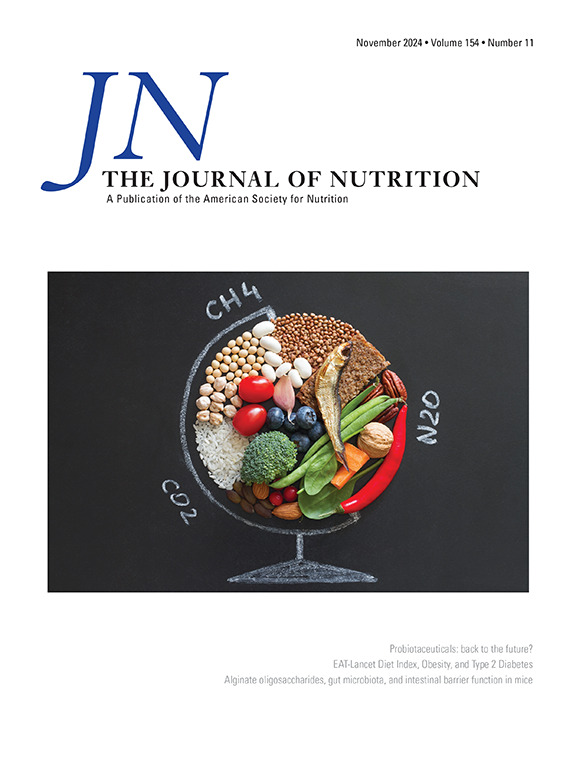Comparison of the Effectiveness of Protein Supplementation Combined with Resistance Training on Body Composition and Physical Function in Healthy Elderly Adults
IF 3.7
3区 医学
Q2 NUTRITION & DIETETICS
引用次数: 0
Abstract
Background
The global population of individuals over 65 y is expected to reach 426 million by 2050. Aging is associated with a progressive loss of muscle mass, strength, and function, leading to sarcopenia and adverse outcomes such as physical disability and increased mortality. Interventions such as resistance training and protein supplementation have shown promise in mitigating these effects.
Objectives
To determine the comparative effectiveness of protein supplementation, resistance training, and their combination on body composition and physical function in healthy older adults through a network meta-analysis.
Methods
We conducted a systematic review and network meta-analysis following PRISMA guidelines and registered it in PROSPERO (CRD42021226561). We included randomized controlled trials comparing protein supplementation, resistance training, and their combination in participants aged ≥50 y. Data were extracted from PubMed, Web of Science, Embase, and Cochrane Library. The risk of bias was assessed using the Cochrane Collaboration Risk of Bias Tool.
Results
A total of 38 randomized controlled trials involving 2610 participants were included. The combined intervention of protein supplementation and resistance training significantly improved lean body mass (standardized mean difference [SMD]: 0.44; 95% confidence interval [CI]: 0.05, 0.95) compared with protein supplementation alone. The combined intervention also showed significant improvements in muscle mass (SMD: 1.49; 95% CI: 0.11, 2.67). The combined intervention (SMD: 2.74; 95% CI: 0.76, 4.74) and resistance training alone (SMD: 2.53, 95% CI: 0.29, 4.84) significantly improved muscle strength compared with controls. The combined intervention (SMD: 4.98; 95% CI: 2.72, 7.17) and resistance training alone (SMD: 4.52; 95% CI: 2.30, 6.64) significantly improved physical function compared with protein supplementation alone.
Conclusions
Combining exercise and protein supplementation is the most effective method for improving muscle mass, strength, and physical function in older adults. This approach should be considered to enhance physical health in this population. Future large-scale trials are necessary to confirm these findings.
求助全文
约1分钟内获得全文
求助全文
来源期刊

Journal of Nutrition
医学-营养学
CiteScore
7.60
自引率
4.80%
发文量
260
审稿时长
39 days
期刊介绍:
The Journal of Nutrition (JN/J Nutr) publishes peer-reviewed original research papers covering all aspects of experimental nutrition in humans and other animal species; special articles such as reviews and biographies of prominent nutrition scientists; and issues, opinions, and commentaries on controversial issues in nutrition. Supplements are frequently published to provide extended discussion of topics of special interest.
 求助内容:
求助内容: 应助结果提醒方式:
应助结果提醒方式:


